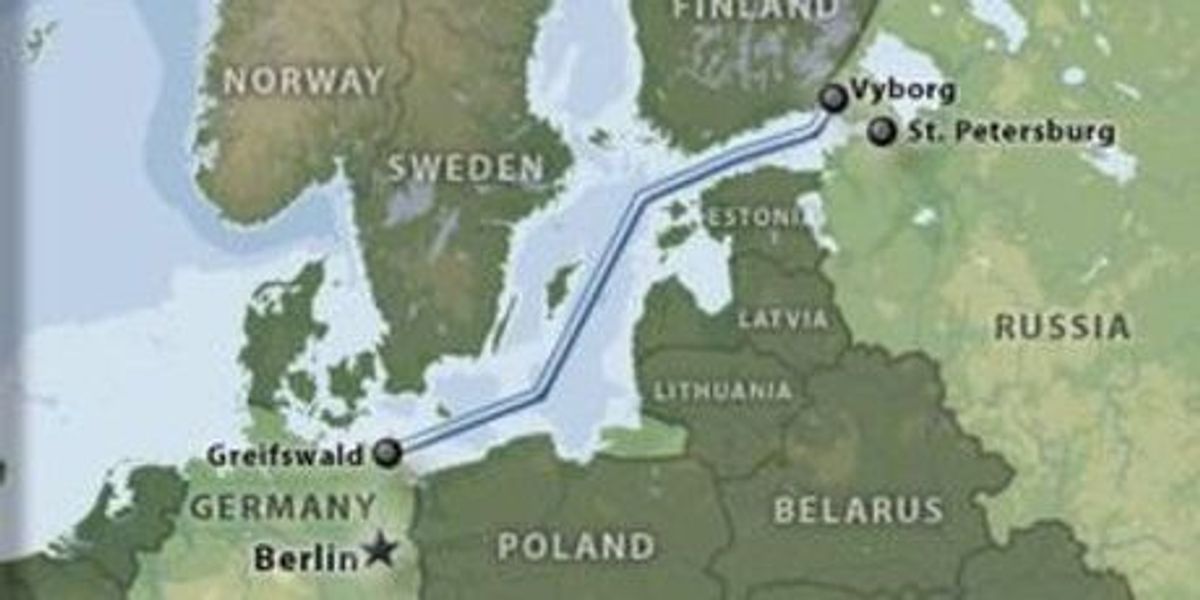Concurrently in the last weeks, world attention has focused on two immensely controversial pipeline projects: the North Stream natural gas pipeline, connecting western European consumers with suppliers in Russia and central Asia; and Keystone XL, which would take petroleum from Canadian oil sands in Alberta and transport it to refineries in Louisiana and Texas. The two projects both raise basic geopolitical issues—but issues representing quite different types of geopolitics.
North Stream is controversial because it carries gas from Russia under the Baltic directly to Germany, bypassing Poland and Ukraine. This means Russia could curtail gas shipments to Ukraine, which it has done several times to exact financial and political concessions, or to former Soviet satellite countries, without affecting supplies to West Europe. Arguably, North Stream positions Russia to bully Poland, the country that suffered the most at the hands of the Nazis in World War II.
Contemporary Germany's political culture is in many ways exemplary. But it does not speak well of the culture that former chancellor Gerhard Schroeder has served as chairman of North Stream, fronting for the project and acting in effect as an employee of Russian President Vladimir Putin. In some countries such an intrinsically conflicted arrangement would not be tolerated.
Keystone XL is controversial for a very different set of reasons. Together with two earlier pipelines that were approved in 2008 and 2009, it would bring close to 3 million barrels per day of heavy crude oil to the United States from Canada. As Canada is a completely reliable supplier, unlike some OPEC countries or Russia, the new pipeline would contribute materially to U.S. energy security.
The objections to Keystone XL are not politico-military, as with North Stream, but environmental. The pipeline would lead to more oil sands extraction, an energy-intense and carbon-intense process that also devastates the local environment; and delivery of the heavy oil to U.S. refiners will enable continued reliance on fossil fuels, a reliance that environmentalists say is incompatible with the U.S. pledge to cut its greenhouse gas emissions 80 percent by 2050.
For those reasons, environmentalists' opposition to Keystone XL has been fierce, unanimous, and pointed. At this writing, hundreds of demonstrators have been arrested at the White House. Twenty scientists, among them several of the most eminent U.S. climate scientists, have written to President Obama saying the Keystone project is incompatible with climate goals. All the top U.S. environmental organizations have joined in a letter asking the president to kill Keystone—and warning him of political consequences if he does not.
The groups described the pipeline as “perhaps the biggest climate test you face between now and the election,” and said that "If you block it, you will trigger a surge of enthusiasm from the green base that supported you so strongly in the last election," clearly implying that if he does not block it, that enthusiasm will be absent.
It's a major quandary for the president. The U.S. State Department, which was responsible in this case for preparing an environmental impact statement (because a cross-boundary project is involved), has issued an EIS saying that Keystone XL is in the national interest. But environmental leaders have drawn a line in the (oil) sand: As they see it (and I'm frankly in agreement with them here), the national interest in reducing greenhouse gas emissions and cutting the risk of catastrophic climate change must take precedence over near-term energy security. If the president takes the opposite view, they are warning, he should not expect to see environmentalists among those ringing doorbells, stuffing envelopes, and manning phone banks next year.



